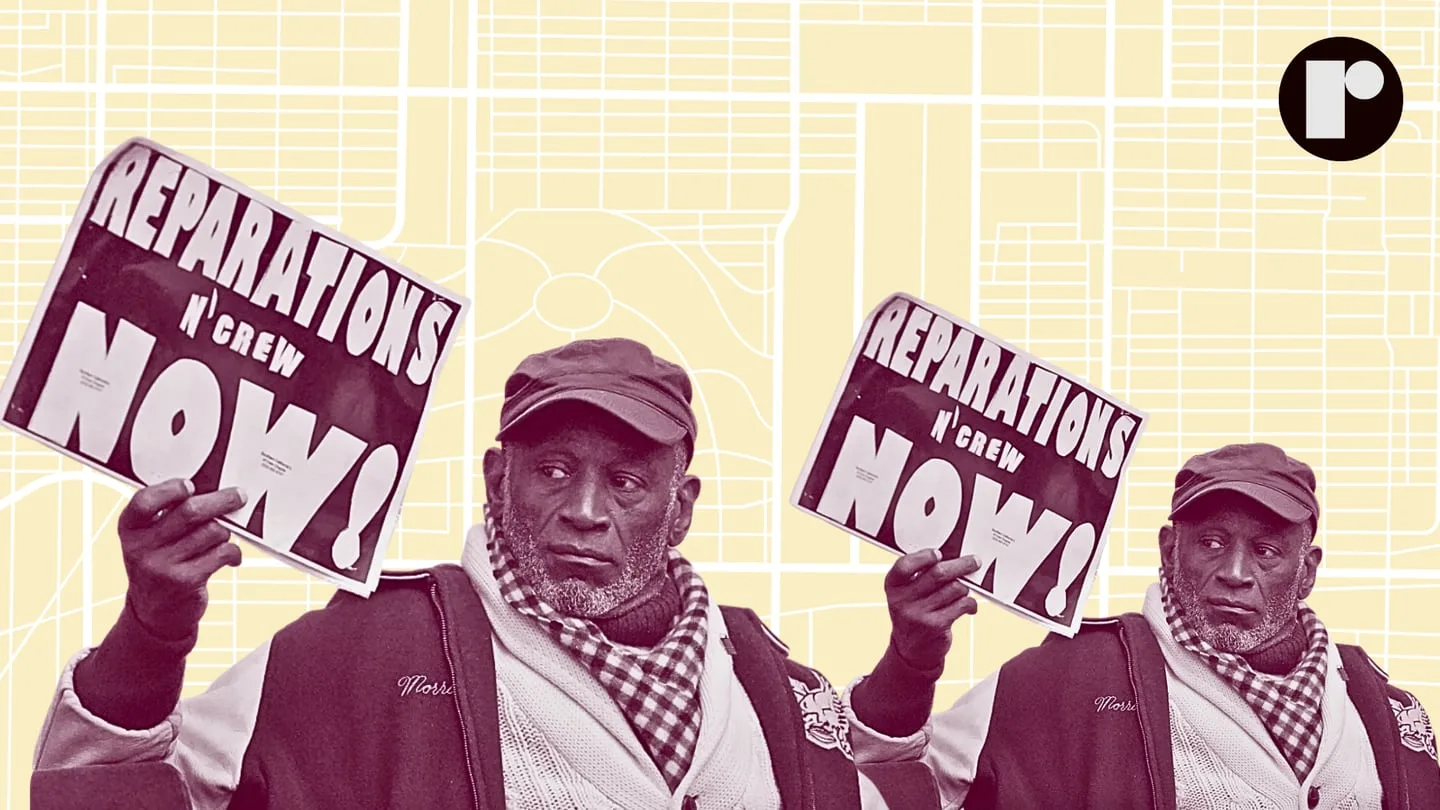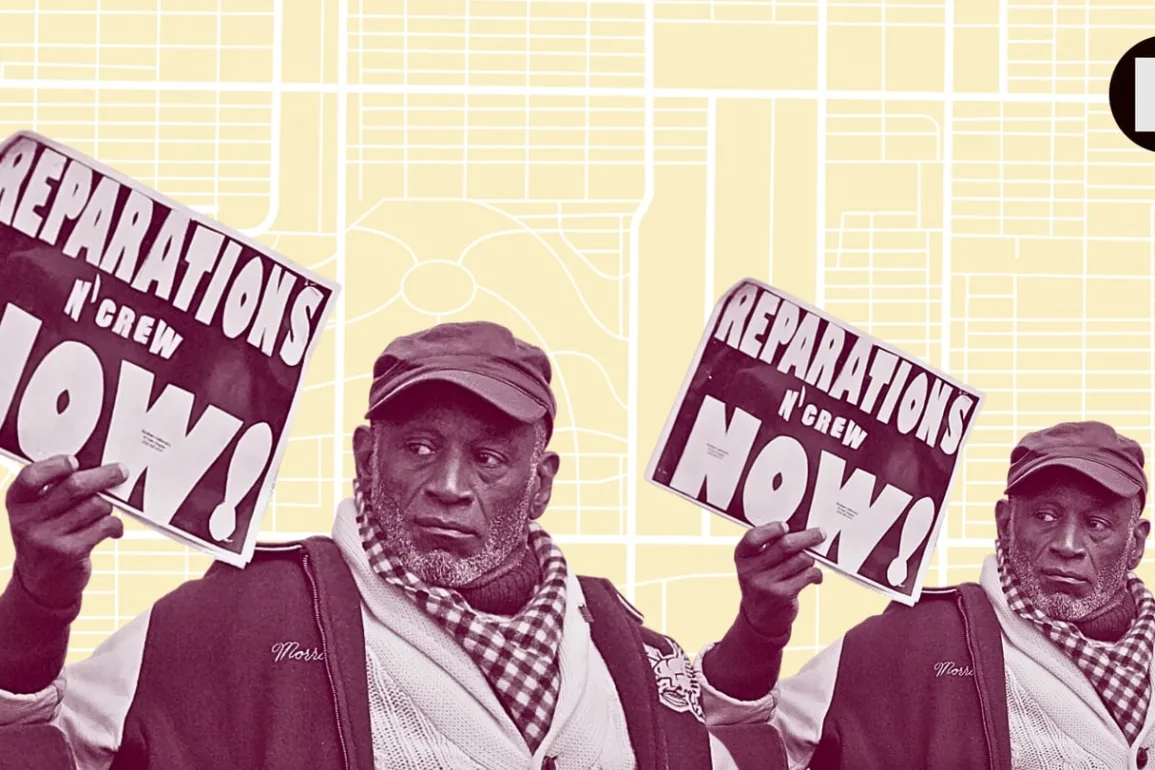
This story is the second in a two-part series on reparations, its history, and its progress moving forward. Read the first story here.
For most Black Americans, the very concept of reparations or financial compensation repaid for enslavement feels like a Sisyphean exercise. But, surprisingly, the national reparations movement is making some headway — through local governments and commissions.
Currently, reparations proposals have been implemented or are under review in every region of the country.
In Evanston, Illinois, reparations planning began in June 2019 after a resolution was put into place to “acknowledge its own history of discrimination and racial injustice.” The official Reparations Committee was established in November 2020.
A city with about 75,000 residents, Evanston is 16% Black. Robin Rue Simmons, the former 5th Ward Alderman in Evanston, has led the initiative in the city just north of Chicago. She also founded FirstRepair, a nonprofit dedicated to the local-to-national reparations movement.
“The Black community should prescribe what redress looks like,” Simmons told Reckon. “I began working through a public process so that we could get feedback from the community. Then, I requested a report on our anti-Black history here in Evanston and later got a legal framework so that we could have a viable case and legislation could be implemented. But there was not a model. And Evanston now has created a model that’s being used in other places.”
Evanston’s Reparations Committee was initially seeded with $10 million from adult-use cannabis sales tax revenue collected by the city. She told Reckon that the initiative has since garnered another $10 million.
Simmons explains that residents of Evanston qualify for the reparations by “being a Black resident Evanstonian and adult.” She adds that if someone was 18 in Evanston between 1919 and 1969, or they’re a direct descendant of someone who was an adult between 1919 and 1969, they would qualify. “I would qualify for reparations because my parents and grandparents were both here,” Simmons says.
In August, Evanston’s Reparations Committee announced that it had disbursed $1,092,924 in reparations so far through the Local Reparations Restorative Housing Program. Each resident received $25,000 per person in housing grants to be used for down payments, home repairs or mortgages.
But, even without a model, dozens of cities and states have begun to address the idea of reparations to Black Americans in their communities.
In 2020, the Asheville, North Carolina, City Council passed a resolution for a community reparations initiative for Black residents in the city. In the same year, Washington D.C. council member Kenyan R. McDuffie of Ward 5 introduced legislation to launch a task force to study reparations for the city’s Black residents.
In March, St. Louis Mayor Tishaura O. Jones assembled a group of volunteers for the city’s first Reparations Commission, designed to offer recommendations for how to distribute reparations to the Black citizens of St. Louis who are descendants of enslaved people.
In June, California Gov. Gavin Newsom received the final report and recommendations from the state’s Reparations Task Force for his review. In early October, New York City Mayor Eric Adams expressed support for legislation that would offer Black New Yorkers repayment related to American slavery.
The community empowerment organization Black Voters Matter launched an initiative in June, awarding nearly $150K in grants to local grassroots groups under its Black Reparations Fund. And various universities, such as Georgetown and other colleges around the nation, are now pushing for reparations to address their racist histories with financial repayments.
Even in the Southern state of Georgia, in February, Atlanta’s Fulton County approved $250,000 to study reparations for Black residents.
However, not everyone involved in the reparations movement agrees with Simmons and others on the local strategy.
Economist and professor at Duke University’s Sanford School of Public Policy, Dr. William Darity, argues that local initiatives are potentially dangerous.
“I think Robin Rue Simmons would say that the state and local initiatives are a pathway to federal action,” Darity tells Reckon. “We’re inclined to think that it’s actually an obstacle to federal action because there are people who are going to say, ‘Well, you have all of these state and local programs out there.’ Even though, in fact, they’re not really a large proportion of the total. It essentially lets them off the hook because they’re going to say it’s already been done.”
Darity says he does believe that a local reparations initiative in the District of Columbia makes sense because it is a federal district.
“If they pursue local reparations, which they are attempting to do, our perspective is that they should pursue having congressional funding of their project. And that would set a precedent for a program. And it would also be highly appropriate because the District of Columbia is the only place where Congress actually paid slaveholders to emancipate their human property,” Darity says.
Darity is referring to the Compensated Emancipation Act that became law on April 16, 1862. The act freed slaves in D.C., compensating the enslavers $300 per slave. The law led to the freedom of 2,989 Black enslaved Americans in the months after the law was enacted. That same $300 would be equivalent to about $9,142 today.
The most notable player in the reparations movement is the National African American Reparations Commission (NAARC). Established in 2015, NAARC is a nonprofit comprised of lawyers, doctors, journalists, historians, and social and civil justice leaders united in the fight for reparations.
National co-chair of NAARC, Kamm Howard, tells Reckon that NAARC’s focus is getting buy-in on its 10-point platform – which includes a formal apology from the U.S. government, funds for repatriations to the African nation of their choice, health care, education improvements, and repair of the criminal justice system. The group also wants a presidential executive order to create a federal commission on reparations.
The need for an executive order comes with repeated efforts by Democratic lawmakers to get S. 40, also known as the “Commission to Study and Develop Reparations Proposals for African Americans Act,” the Senate companion to H.R. 40, out of committee. H.R. 40 was introduced by Texas Democratic Rep. Sheila Jackson Lee in 2021 and reintroduced by New Jersey Sen. Cory Booker in January 2023.
“Our nation must reckon with its dark past of slavery and its continued oppression of African Americans, fueled by white supremacy and racism,” Booker said in a press release. “Many of our bedrock domestic policies that have ushered millions of Americans into the middle class have systematically excluded Black individuals.”
The legislation was co-sponsored by a long list of Democratic senators and more than 190 organizations working to advance equality and justice.
In May, Missouri Democratic Rep. Cori Bush announced a resolution for $14 trillion to be disbursed to Black Americans.
But, the idea of reparations remains unpopular with the broader American public.
In 2021, a Pew Research Center poll found that a scant three in 10 Americans felt Black American descendants of enslaved people should be repaid. A poll taken in September 2023 found that the majority of California voters opposed cash payments to descendants of enslaved Black Americans.
In response to Bush’s bill, Florida Republican Rep. Kat Cammack said: “I think that is just the woke ideology peeking and rearing its ugly head. … In this country, you can do anything, be anything, and this culture of victimhood, it has absolutely gotten out of control.”
Howard says that reparations isn’t just about money. It’s also about taking positive steps forward under international norms as defined by the United Nations and the Office of the High Commissioner – restitution, compensation, rehabilitation and satisfaction.
“Apologies have been given by certain states, certain cities, monuments have been torn down, new markers and monuments have been built. We have a museum, the National Museum of African American History and Culture, that’s part of reparations under international norms in the area of satisfaction, returning dignity back to our people. And cultural centers around the country are being funded a little bit more by governments. That’s part of reparations. So we’re seeing reparations. We just don’t know that it’s reparations,” Howard says.



